From the Archives ...
Fishing on the Wild Side
Fishing on the Wild Side
Mike Fry doesn’t only live on the Wild Side of Tasmania, but also goes fishing in probably the wildest boat ever to troll for trout—certainly in Tasmania.
When your mate says ‘What are you doing tomorrow, want to come up the Gordon for the night?’ it would be pretty hard to say anything else except “you bet” and start checking out your tackle box and packing your overnight bag. But if your mate was Troy Grining and he wanted to give his new 52ft, high speed cruiser a run across Macquarie Harbour, test the new onboard dory with a chance of landing a nice Gordon River Brown you would have to feel privileged. I didn’t say anything about getting on my hands and knees and kissing his feet…just having a lend of ya’ but I did feel very appreciative.
Please check all relevant authorities before fishing - www.ifs.tas.gov.au and dpipwe.tas.gov.au . Don't forget issuu.com/stevenspublishing for years of back issues !
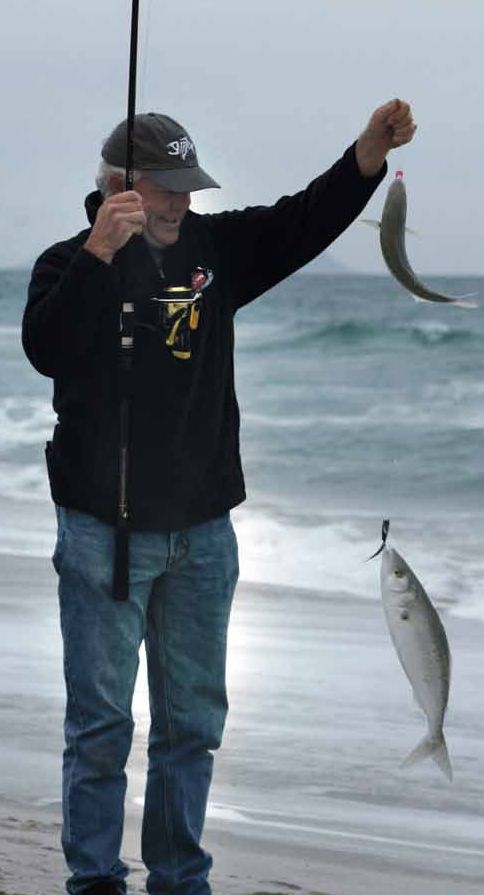 Presented from Issue 101
Presented from Issue 101
For as long as people have been coming to the East Coast of Tasmania, surf fishing its beaches has been one of the most popular pastimes. Whilst not always the most productive form of fishing it certainly is one of the most relaxing. Its something that the whole family can be involved in and I have to say its quite something to see a group of families on the beach, dads with a couple of surf rods out, wives sunbaking on the white sand in the sun and the kids either playing happily, building sandcastles or trying their hand at a bit of light surf fishing.
The chance to have a holiday on the beach, put a smile on the children’s face and wet a line at the same just can’t be overrated. Add to that the chance of putting a fresh feed of fish on the dinner table and you have wonder whether heaven could be better than this
All that is need is a basic range of gear, some comfy camp chairs , an esky full of ice, drinks and food — and of course a separate esky for the bait, sunscreen, hat and sunnies and plenty of time to relax and enjoy the atmosphere. Many of the East Coasts beaches offer very easy access and often some great free camping facilities right on the beach as well as some light rock fishing in some areas.
- Written by Stephen Smith - Rubicon Web and Technology Training
- Category: Saltwater and Estuary Fishing
- Hits: 5696
Read more: Surf’s Up - Fun in the sun - and a few fish too - Jamie Henderson
 ... there's still some beauties to be caught - Adrian Webb 2017 04 13
... there's still some beauties to be caught - Adrian Webb 2017 04 13
Today I decided to have a trip to a small stream/creek in the upper reaches of Gunns Plains it's one that I haven't fished for six years. The reason I decided to check it out was because I was going back through my diaries and came across a report of one of my trips to it. I have no idea if it's has a name or not as it's one I stumbled onto one day while checking out a few back roads that crossed over small creeks & streams in the area that flow into the Leven River. It's very over grown in most sections and calls for some accurate casting.
- Written by Stephen Smith - Rubicon Web and Technology Training
- Category: Leven River
- Hits: 5624
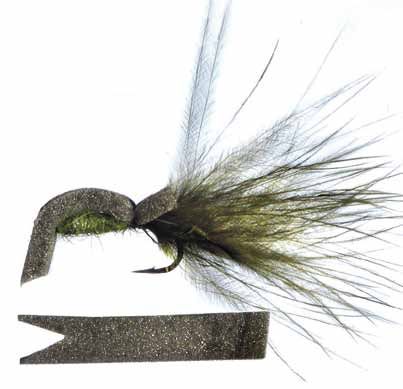 Presented from Issue 101
Presented from Issue 101
Over the last couple of months I have traveled to some of Australia’s most remote red sand country where there were fish in remote billabongs.
These are fed by the northern waters flowing into Lake Eyre Basin. To be invited onto a million acre station catching golden perch (yellow belly) and grunter was a great privilege and is another fishing adventure ticked off.
- Written by Stephen Smith - Rubicon Web and Technology Training
- Category: Jan’s Flies
- Hits: 4188
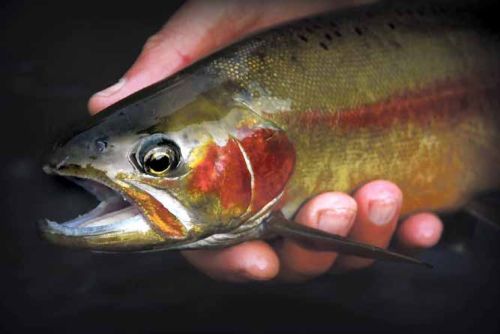 Presented from Issue 101
Presented from Issue 101
I am a fly fisher living on the banks of the Mersey River in Latrobe in northern Tasmania. Some, close to me, think I am obsessed. I get to see close hand the cycles of the river and its inhabitants throughout the changing seasons. For me the most exciting time of the trout fishing season is late spring and early summer when the aquatic insects, like the caddis flies, stoneflies and above all the majestic mayfly, are going through their hatching stages. What follows is a story of a spring morning’s fishing on my favourite stream.
- Written by Stephen Smith - Rubicon Web and Technology Training
- Category: Mersey River
- Hits: 6063
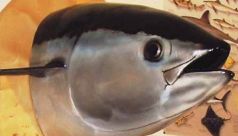 Presented from Issue 101
Presented from Issue 101
Catching the fish of a lifetime was one thing, but preserving it as a trophy was going to be another. Since the capture of the massive 147kg Southern Bluefin Tuna which we had now affectionately called ‘Charlie’, the desire to have the fish immortalised grew.
But just how do you freeze a fish head and backbone that weighed over 50 kg and measured over 2 metres long? Most of the flesh had been shared among friends, family and neighbours and in the first week alone it was calculated that over 140 people had eaten a meal from “Charlie”. Some had commented “best sashimi ever” whilst others had preferred the taste of the smaller, tastier, softer school bluefin tuna. Charlie had been grilled, fried, curried, marinated, smoked, baked, battered, mornayed, and yes…even eaten raw.
- Written by Stephen Smith - Rubicon Web and Technology Training
- Category: Tuna Fishing and other Game Fishing
- Hits: 6851
Read more: Making a Trophy - 147 kg Southern bluefin tuna - Geoff Madden and John Wilesmith
Presented from Issue 101
It’s warming at last! The weather is becoming more predictable and water temperatures have accordingly risen. Along with this comes the hatches and falls of insects which bring trout to the surface. The sinking lines can be put away for a while and the excitement of top of the water fishing can take its place. Not only does static dry fly come to the fore, but also top of the water loch style techniques particularly on rougher days.
- Written by Stephen Smith - Rubicon Web and Technology Training
- Category: Fly Fishing
- Hits: 7198
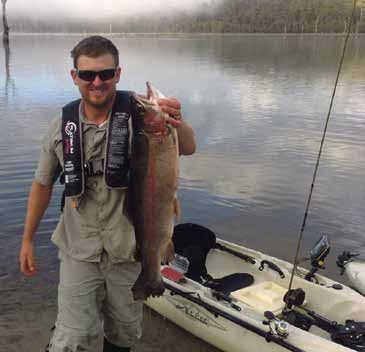 Presented from Issue 101
Presented from Issue 101
Introduction
A kayak can be a very cost effective alternative to purchasing a boat. In terms of fish catching ability, a kayak can also be more effective than a boat. The ability of a kayak to be taken in very shallow water, combined with the kayak’s overall manoeuvrability, are the reasons for this. It is also no secret that often these shallow, hard to reach places also hold the best fish.
It is no wonder that, in recent years, the sport of kayak fishing has taken off all around the world. In the United States, this style of fishing has become somewhat of a craze, and many anglers are embracing the sport with a similar level of passion here in Australia. We now have kayak- fishing tournaments that are a national affair, with regular coverage in magazines and on television. Tournaments aside, many recreational anglers are choosing to fish this way simply because its a fun, cost effective and a productive way of fishing.
- Written by Stephen Smith - Rubicon Web and Technology Training
- Category: Kayak Fishing
- Hits: 10933
Read more: Kayak Setup Guide to the basics for fishing - Michal Rybka
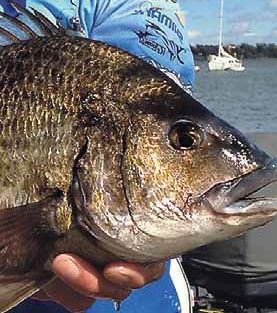 Presented from Issue 101
Presented from Issue 101
What is it about Bream?
While growing up I had the fortune of spending summer holidays at arguably one of the best bream fishing waters in Australia in Ansons Bay. Being young and eager just to feel the weight of a fish on the rod, catching bream was often derailed by chasing the abundant cocky salmon and silver trevally. While these species were on the chew, getting the buzz out of hooking and landing a fish was too much of a temptation. Often schools of bait fish would be busted up in the bay given away by the tell tail signs of seagulls and terns diving in to pick up the scraps left by the salmon as they slammed the abundant anchovies, or what the locals called “sardines”.
- Written by Stephen Smith - Rubicon Web and Technology Training
- Category: Bream
- Hits: 7950
Read more: Bream Lessons and memories from Ansons Bay - Grant Stingel
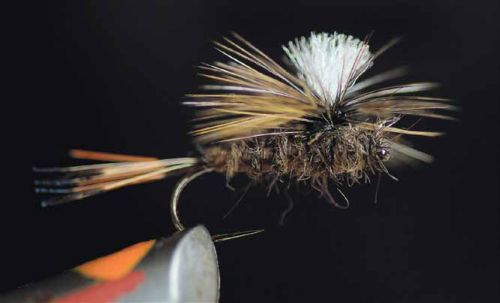 Presented from Issue 101
Presented from Issue 101
That time of year has finally arrived. The rivers start to settle after a winter full of cold weather and rains. The water of the highland lakes warms. Combine this with warmer weather patterns and you little beauty it all begins to happen. What am I talking about, well I reckon you have guessed it by now, the mayflies will be starting to hatch.
The famous hatches from the slow, flat lowland rivers of Tasmania’s Northern Midlands area should be well under way and the mayfly waters of the central plateau should follow, if they haven’t already started.
- Written by Stephen Smith - Rubicon Web and Technology Training
- Category: Fly Fishing
- Hits: 8177
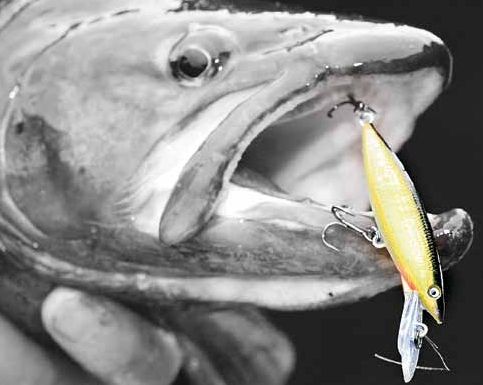
Presented from Issue 100
Considering the world class quality of our sea trout fishery, these fish are not sought after by enough anglers. Sea runners live in the salt water and run up our estuaries and rivers from the start of August to the middle of November. At this time of the year, they are here to eat the many species of fish that are either running up the rivers to spawn or are living in and around the estuary systems. Trout, both sea run and resident (Slob Trout) feed heavily on these small fish which darken in colouration as they move further into fresh water reaches.
The majority of these predatory fish are brown trout with rainbows making up a very small percentage of the catch. They can be found all around the state but it would be fair to say that the east coast is the least prolific of all the areas. They still run up such rivers as the Georges (and many others) but their numbers along with the quality of the fishing elsewhere make it difficult to recommend the area above the larger northern, southern and western rivers.
- Written by Stephen Smith - Rubicon Web and Technology Training
- Category: Saltwater and Estuary Fishing
- Hits: 13907
Read more: Sea runners - Early Season Excitement - Christopher Bassano
Subcategories
Current TFBN
Click above for current issue content. The current issue of TFBN is extensive and topical. In Tackle Stores, Newsagents and by subscription.
Delivered to your door for $48 for 2 years (8 issues). To subscribe, send Mike $48 via www.paypal.com.au . (Basic instructions are here) The email is at Contact Us. Your address will be included from PayPal.
Or phone Mike with your c/c handy on 0418129949
Please ensure your details are correct, for Mike to organise delivery.
TFBN Newsletter Sign up Form
Why not submit an article ?
When you have finished for the day, why not have a brag about the ones that didn't get away! Send Mike an article on your fishing (Click here for contact details), and we'll get it published here. Have fun fishing - tasfish.com
Category Descriptions
Here is a list of all of the Article Categories. The number in Brackets, eg (13) is the number of articles. Click on Derwent River and all articles relating to the Derwent will be displayed in the central area.
Articles by Category
-
Rivers (3)
-
Saltwater and Estuary Fishing (149)
-
Kayak Fishing (34)
-
Lakes (1)
-
Great Lake (62)
-
Lake Leake (52)
-
Woods Lake (16)
-
Lake Augusta (11)
-
Huntsman Lake (13)
-
Lake Pedder and Gordon (10)
-
Lake Dulverton (5)
-
Lake Crescent (6)
-
Tooms Lake (10)
-
Lake Mackintosh (2)
-
Lake Barrington (5)
-
Little Lake (8)
-
Meadowbank Lake (5)
-
Lake King William (7)
-
Lake St Clair (2)
-
Western Lakes (12)
-
Arthurs Lake (35)
-
Lake Echo (7)
-
Four Springs (54)
-
Lake Sorell (7)
-
Lake Burbury (6)
-
Other Lakes (57)
-
Brushy Lagoon (18)
-
Little Pine Lagoon (5)
-
Penstock Lagoon (16)
-
Brumbys Creek (7)
-
-
Events (48)
-
Estuary Fishing (0)
-
Coastal Catches (46)
-
Super Trawler (46)
-
IFS, DPIPWE, MAST and Peak Bodies (435)
-
Commercial Interests (98)
-
Other (24)
-
TFBN Back Issues (8)
-
Fly Fishing (67)
-
Trout Fishing (250)
-
Meteorology and Weather (8)
-
Jan’s Flies (50)
-
Tuna Fishing and other Game Fishing (86)
-
Cooking Fish (19)
-
Fishing Information (1)
-
Fishing Books (8)
-
Videos (5)
-
Tackle, Boats and other Equipment (146)
-
World Fly Fishing Championship 2019 (2)
Popular Tags
windyty.com
Visit https://www.windyty.com/
Rubicon Web and Technology Training
Hello everyone, I thought it would be a good time to introduce myself.
My name is Stephen Smith and I have been managing the website tasfish.com since May 2009.
It has been an epic journey of learning and discovery and I am indebted to Mike Stevens for his help, support and patience.
I am developing a new venture Rubicon Web and Technology Training ( www.rwtt.com.au ). The focus is two part, to develop websites for individuals and small business and to train people to effectively use technology in their everyday lives.
Please contact me via www.rwtt.com.au/contact-me/ for further information - Stephen Smith.
From the Archives ... (last chance)
Suggestions for Early Season Waters
Suggestions for Early Season Waters
by Sarah Graham
Many anglers are preparing for the opening of the new angling season on Saturday 7 August and it's shaping up to be another good one with the fishery in excellent health as a result of last year’s drought breaking rains. There are many great fishing locations around the State from which to choose for the opening weekend and early season fishing but here are a few suggestions.



